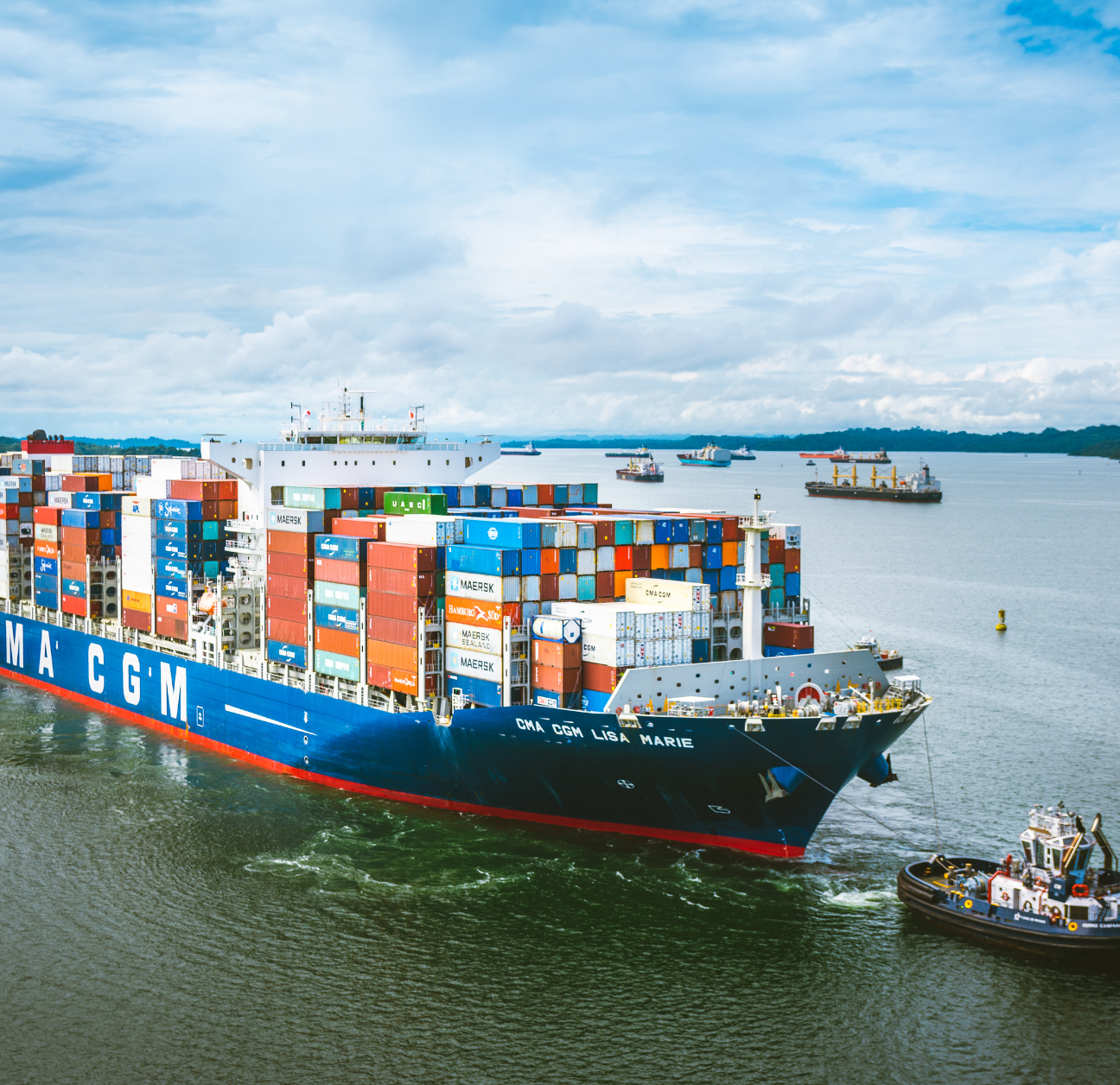Seamlessly integrate your TMS, ERP or any other platform in your ecosystem with your customers, partners, or software vendors, so you can offer CO2 data and stay ahead of SEC regulations.
CO2 Supply Chain
CO2 supply chain issues have resulted in major disruptions for companies around the world. But what is the supply chain issue, and what does CO2 data have to do with it? In a nutshell, CO2-related problems in the supply chain are caused by activities involved in the production and distribution of goods. Many of these activities emit high levels of carbon dioxide. Organizations are becoming increasingly aware of these issues and are working to reduce their carbon footprint. Supply chain emissions are really where CO2 problems take root, and so if businesses can stop them in their tracks at the supply chain level, they can eliminate issues elsewhere.
Understanding the supply chain carbon footprint definition and freight forwarder's digital nervous systems is key to understanding how CO2 emissions impact the supply chain. Put simply, a supply chain’s carbon footprint describes the amount of CO2 released as a result of production and distribution activities. Carbon emissions calculators can help you determine your carbon footprint. Those that manage supply chain operations should use these calculators on a regular basis to track their emissions over time. This� can give them a better idea of what, if anything, should be changed to reduce their carbon footprint.
Supply chain emissions typically fall under Scope 3 emissions. These are emissions that are not produced by the organization itself but for which they are indirectly responsible through the supply chain. Because Scope 3 emissions are caused by products produced by third-party entities, it can be difficult for companies to measure the true impact they’re having on the environment. This is why many businesses today use advanced tools and software to not only track their own assets and activities but those produced by other companies they work with in the supply chain. By monitoring your carbon emissions data through the global supply chain, you can work towards greener solutions at all levels.
Examples of Carbon Footprint Across the Supply Chain
Reviewing examples of carbon footprint across the supply chain, as well as specific greenhouse gas emissions across the supply chain, can give you a better idea of what these emissions are and how they affect business operations. Coal supply chain emissions are among the most common emissions that impact the supply chain, as are emissions related to transportation. When left unchecked, these can result in major environmental and economic consequences for businesses, which is why it’s important to stay on top of all supply chain activities to reduce emissions.
Becoming familiar with supply chain emissions Scope 3 activities and your supply chain digital nervous system is crucial to understanding how the rest of your supply chain is affecting your carbon footprint. Although Scope 3 emissions aren’t caused directly by reporting organizations, they still reflect poorly on brands, so it’s important to stay on top of the emissions caused by various components of your supply chain. Special tools and software can help you keep better track of your carbon footprint, not only in the materials you use and sell directly but others that fall within your scope in the supply chain.
Carbon Capture
Carbon capture is the process by which CO2 is captured before it enters the atmosphere. This carbon is then stored in rock formations underground. The carbon capture industry is growing rapidly as businesses realize the value of being able to capture and store carbon before it causes harm to the environment. Researching different carbon capture companies is a good way to determine who to work with and who is best suited to meet your specific business needs. Carbon capture supply chain tools are also helpful for capturing and storing carbon.
Understanding the carbon capture value chain is critical to lowering your carbon emissions and finding alternative solutions to activities that are causing high emissions. There are many moving components in the energy supply chain, and it’s important to realize that each component affects the others in different ways — chains do not exist in siloes. The Department of Energy releases regular reports that can be helpful for businesses wanting to learn more about how to promote clean energy. DOE (Department of Energy) supply chain reports contain detailed information on how to enhance supply chain resiliency. The US energy transition strategy relies heavily on reports like these to understand the impact of carbon emissions on supply chains.
Carbon Reporting Software
Carbon reporting software allows users to calculate their carbon footprint, which is the sum of their upstream and downstream emissions. For example, using an air freight carbon footprint calculator, a business could determine the emissions produced by air freight. Similarly, with a shipping carbon footprint calculator, you can determine the emissions caused by your shipping activities. A supply chain carbon footprint calculator can be tremendously helpful for businesses that are trying to reduce their carbon footprint.
One of the great things about using CO2 calculator transport tools is that they eliminate the guesswork from the equation. For instance, a truck CO2 emissions per km calculator can be useful for determining the exact amount of CO2 emitted with each kilometer driven. You can get a precise figure and view that number in the context of the rest of your emissions, thus determining the extent to which your supply chain — as opposed to other aspects of business operations — is contributing to your carbon footprint. You might also use a ratio of supply chain to direct emissions calculator to see what amount of your carbon footprint is coming from supply chain activities and what amount you’re contributing to directly.
Supply chain emissions Scope 3 tools and calculators are extremely important for determining your total emissions. Scope 3 emissions aren’t always immediately visible, and many businesses fail to recognize the indirect impact that their supply chain activities are having on their overall carbon footprint. As such, companies should be mindful of their activities throughout the supply chain — not just what happens when products reach their shelves. Carbon reporting software makes it easier for organizations to track these emissions across all levels of business operations.
Green Supply Chain
The World Economic Forum has been working with supply chain leaders to anticipate how companies can best move towards building sustainable supply chain resilience. By promoting emissions reduction and creating a green supply chain, leaders do their part to fight climate change and improve business operations at a green level. Still, learning how to decarbonize supply chain activities is easier said than done, which is why organizations like the World Economic Forum have created resources to help businesses reduce emissions. World Economic Forum supply chain resources can be especially helpful for small businesses that don’t know where to start.
The Supply Chain Carbon Footprint Reduction Strategy by Supply Chain Game Changer offers a realistic, easy-to-understand solution for reducing emissions in the supply chain. COP26, or the 2021 United Nations Climate Change Conference, also offered some ideas on how businesses can reduce their carbon footprint. COP26 supply chain resources can be helpful for understanding how CO2 is affecting business operations today and what can be done to create a cleaner future. There are many different ways that you can reduce supply chain carbon emissions, so it’s important to consider your specific needs and what you can do as a business to reduce emissions.
Supply Chain Decarbonization
Supply chain decarbonization can be achieved in a number of ways. McKinsey’s article “Making supply-chain decarbonization happen” can serve as a great starting point for businesses that are trying to generate some ideas. You can take advantage of data-driven insights accessed through a decarbonization dashboard. This can give you a broad overview of your performance and help you determine what steps to take next. You can also incentivize your suppliers, explaining your needs and desired outcomes, and rewarding them for doing their part to cut supply chain carbon emissions.
There are many types of decarbonization solutions on the market today, each of which helps move businesses towards net zero logistics or a net zero supply chain. The future of the supply chain is dependent upon businesses stepping up and doing the right thing, and tools and software can allow them to keep better track of their progress. Instead of trying to keep track of all activities by hand, you can centralize data into a single platform. This will allow you to access critical information more easily and promote consistency across the board. Organizing data is a crucial aspect of decarbonizing your supply chain and should not be overlooked.
Chain.io CO2 Data Integrations
Chain.io helps logistics service providers optimize their supply chains with pre-mapped data integrations that help connect companies to better data. It helps them to speak the same language so that they can communicate their needs and work towards building better supply chains. Bridging decades of technology, the platform offers pre-mapped integration solutions to access data across systems. Best of all, Chain.io gets this done more quickly than internal IT teams would be able to. You can get programs up and running in no time so that you can get to work improving your supply chain and reducing carbon emissions.







